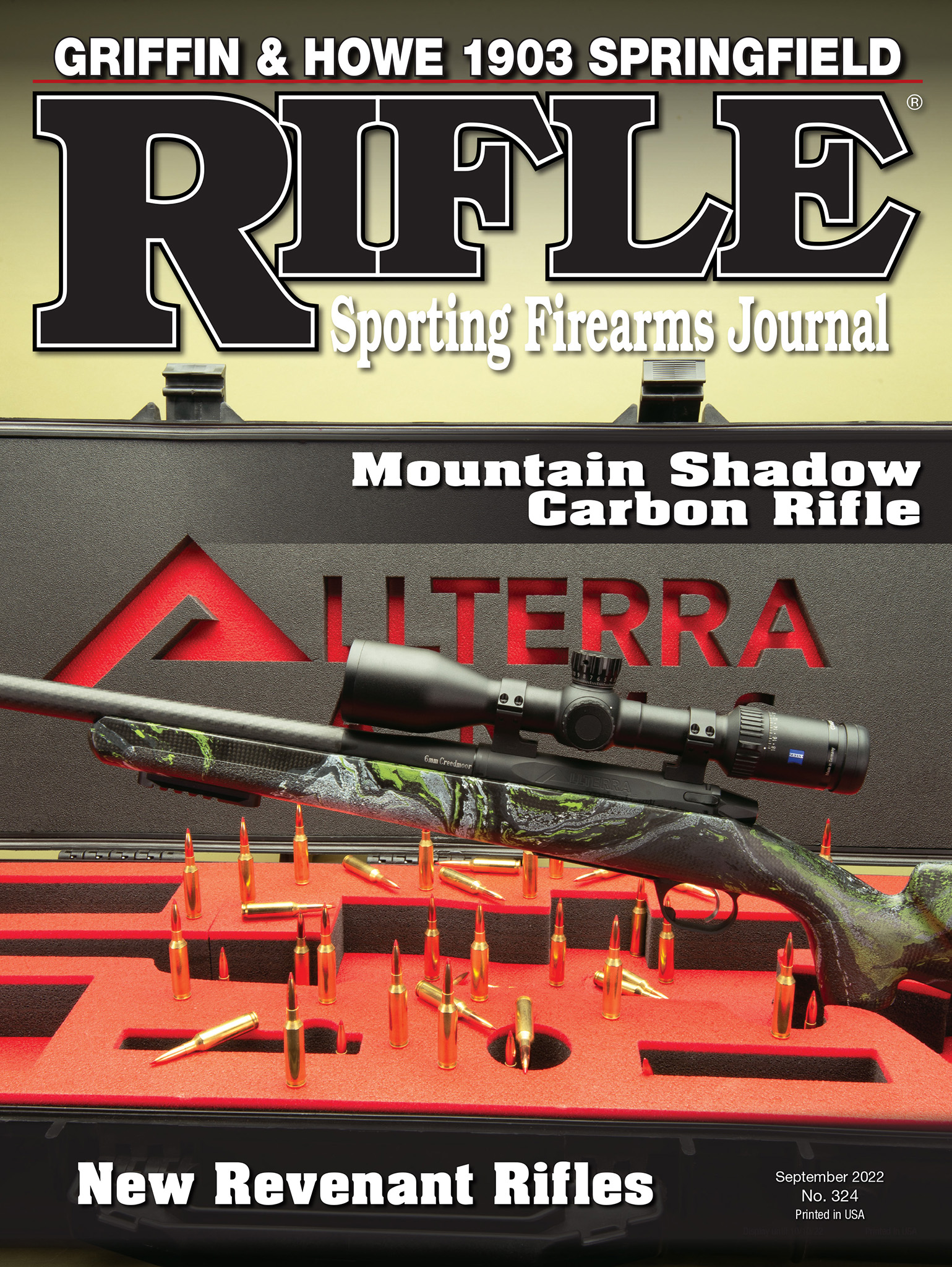Griffin & Howe 1903 Springfield
Finally Finding a Grail Rifle
feature By: John Barsness | September, 22
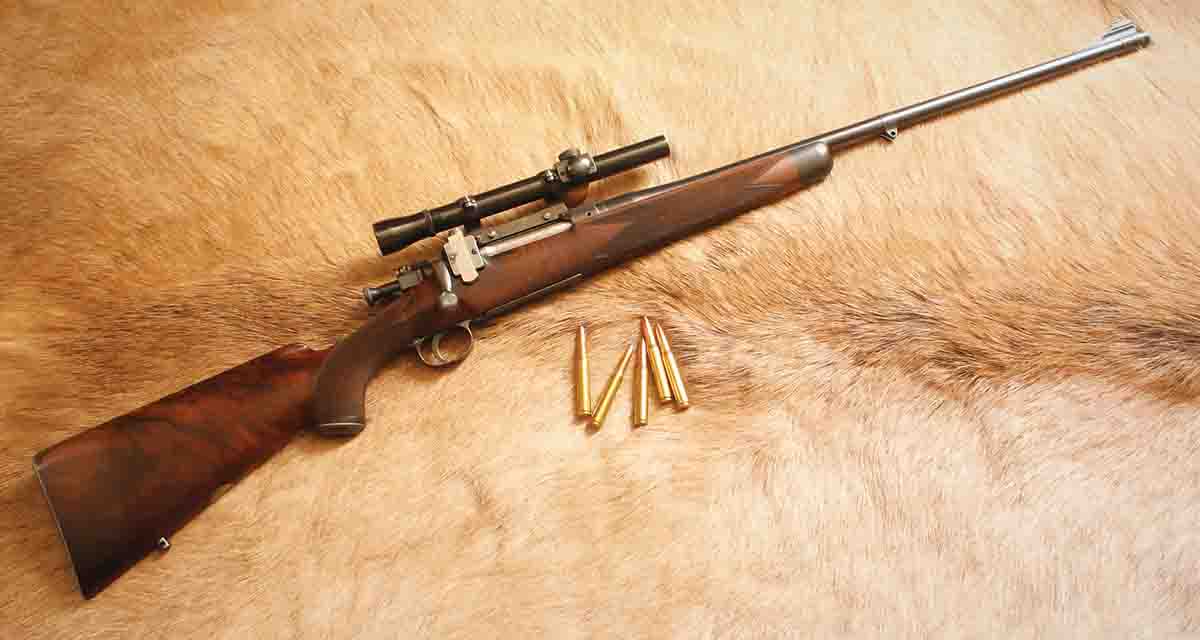
My childhood took place in Montana, and when I became a full-tilt rifle enthusiast at around age 12, more of my father’s friends hunted with 1903 Springfields than any other rifle. This may seem odd today, but “war surplus” 1903s had recently been released for sale by the director of Civilian Marksmanship at very affordable prices – at least for adults. My paper route income wasn’t quite enough, partly due to spending a considerable portion on .22 rimfire ammunition, a subscription to Outdoor Life and a membership in the National Rifle Association, which included American Rifleman magazine. The magazines contained articles by Jack O’Connor and Col. Townsend Whelen, and both sometimes expounded on the quality of 1903 Springfields, partly because they came chambered in the All-American .30-06. (Whelen is often quoted as saying, “The .30-06 is never a mistake” – the title of an article he published in the December 1947, American Rifleman, long before I subscribed, or was even born.)
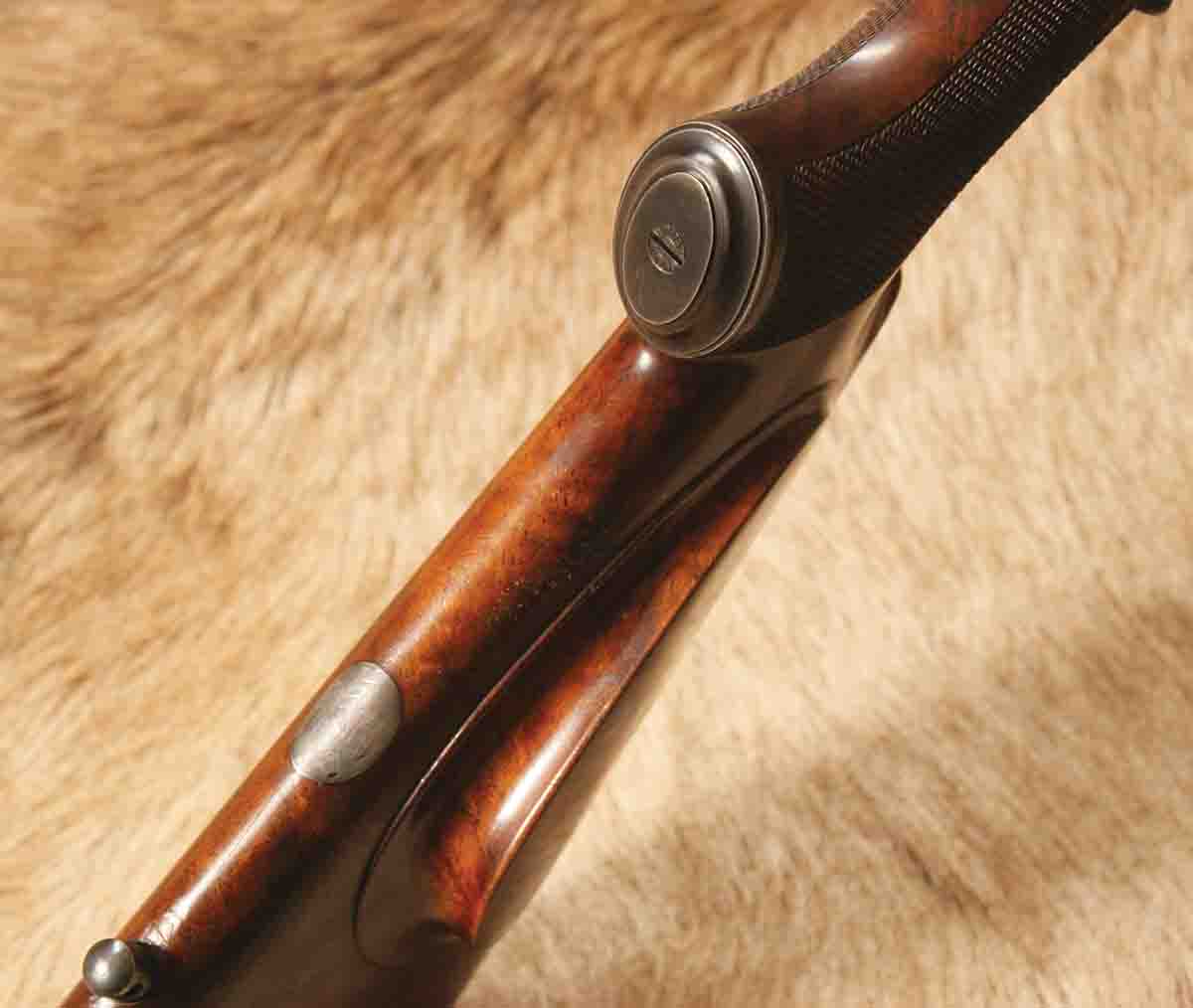
Through reading Whelen and others I eventually discovered “the Springfield” was a custom rifle, put together by Griffin & Howe. The company was formed in New York City in 1923 by a cabinet- and stock-maker named Seymour Griffin, and James Howe, who happened to be the head of the machine shop at the U.S. Army’s Frankford Arsenal in Philadelphia when Whelen was commanding officer in the early 1920s. Naturally, the new firm received favorable mention in Whelen’s writings and did quite well. According to the fine book Hemingway’s Guns by Silvio Calabi, Steve Hensley and Roger Sanger, the Springfield was shipped to Hemingway’s home in Key West, Florida, in June 1930. The rifle and various extra-charge items, including a sling, leather case and a Zeiss Zeilklein 2.25x scope in the detachable side mounts G&H introduced in 1927, cost was $256.50 – close to $5,000 in today’s dollars.
Hemingway had been an avid wingshooter since childhood, but hadn’t hunted much big game. He quickly took to it, using the Springfield on American game up to bull elk and grizzly, so he had plenty of faith in its ability to take bigger game in Africa.
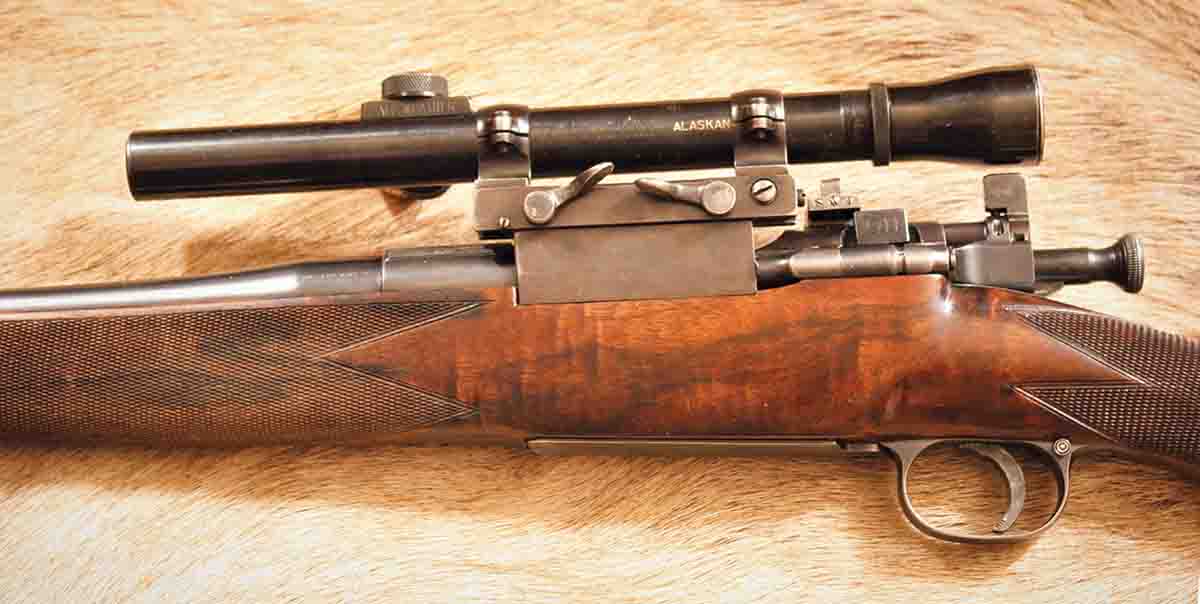
Most G&H Springfields were built on barreled actions for the NRA. Sporter or National Match rifles were obtained directly from Springfield Armory. Griffin & Howe did not rebarrel them, as they did many other actions, finding the “star-gauged” barrels worked just fine. By the time Hemingway ordered the G&H, Townsend Whelen was head of research and development at Springfield Armory and personally selected the National Match barreled action for his rifle.
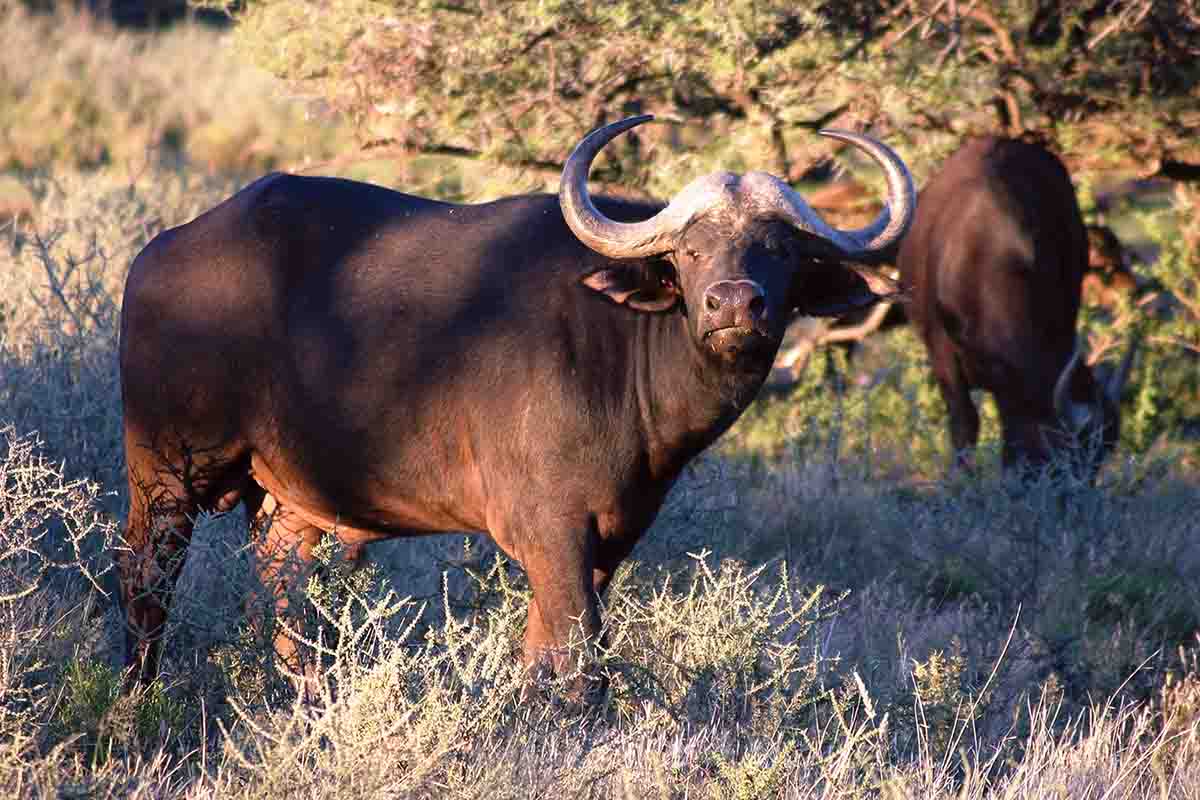
My handloading notes indicate I have owned six 1903 Springfields, the first purchased from a store in Missoula in 1979, already crudely fitted with a sporter stock by some garage gunsmith. After spiffing up and rebedding the stock, the rifle shot very well, even with the original lathe-turned 200-grain semi-spitzer Nosler Partitions I used on elk back then. My notes show 58 grains of mil-surp Hodgdon H-4831 grouped three shots into a little less than an inch, shooting with a steel-tubed K3 Weaver.
The others were a similarly pre-sporterized 1903-A3; a 1903 I had rebarreled to .338-06 and stocked myself in a piece of Oregon maple; a standard-grade Sedgely sporter; yet another 1903 I rebarreled in .30-06 (the original was badly pitted) and stocked myself in walnut; and an all-original Remington 1903-A3, written up in Rifle No. 315 (March-April 2021). Eventually, all were sold and the money turned into other rifles, I suspect partly due to subliminally knowing I really wanted a Griffin & Howe.
This does not mean I consider the 1903 Springfield action the best bolt-action ever made, as some Americans did during its heyday. In the opinion of many rifle loonies (including me) the 1898 Mauser is superior. However, apparently the major reason some thought the 1903 was better was the “superior finish” of 1903s, compared to the millions of rough 98s produced around the world. (This opinion, of course, originated before the 1903-A3 appeared during World War II.)
Aside from all that, the 1903 Springfield is an American icon among shooters of a certain age, despite having shortcomings, such as the separate firing-pin tip borrowed from the Krag. This made the firing-pin fall somewhat “mushy,” and also supposedly resulted in more breakages than a single-piece firing pin. That said, none of the firing pins in any of my Springfields ever broke, and neither did Hemingway’s – and he used his Griffin & Howe as his primary big-game rifle for the rest of his life.
Instead, I yearned for a Griffin & Howe Springfield for a mix of reasons, not the least of which is being American. The first I ever saw “in the flesh” was on a wall at Capital Sports & Western in Helena, Montana in the early 1990s. The rifle was in excellent shape, but the wood was very plain, so I passed. After that, several others showed up in various places, again with relatively plain walnut – but in the fall of 2021 another G&H 1903 appeared at Capital, and even from the far side of their gun room, the stock’s figure stood out from the rifles around it.
The bore was shiny, and while the rifle had obviously gone hunting during its lifetime, it remained in overall excellent condition. The price, however, turned out to be a little more than I ever paid for any firearm in my collection, so I decided to think about it, partly due to recently selling off part of the collection to add to our retirement fund. Eventually, of course, I silently said to heck with thinking, and worked out a deal with Dave Tobel, the head of Capital’s gun department, partly involving swapping a fine German rifle.
Despite the fancy wood, the only real engraving on the metal was some rose-and-scroll on the steel buttplate, though the front end of the floorplate was checkered, apparently a common touch on G&H Springfields that retained the military “bottom metal.” As in most Mauser magazine assemblies of the 1890s, the 1903’s floorplate slides off, after pressing a latch through a hole in the rear of the plate. The checkering provided a better grip when pushing the plate.
This particular rifle also has two safeties, one the standard military wing-type, which like the similar 98 Mauser safety has three positions: safe with the bolt locked down, safe with the bolt openable, and fire. The other is a trigger-blocking safety in the rear of the trigger guard, apparently another option, since not all G&H rifles include it. However, I did find a photo of one in my Wolfe reprint of The Hunting Rifle, by Townsend Whelen (again!), originally published in 1940. The trigger itself is the military 2-stage model, with the first stage shortened considerably, and the second stage breaking cleanly at 3.5 pounds.
The scope, as on most G&H Springfields I’ve handled, is a 2.5x Lyman Alaskan with a dot reticle suspended on very fine crosshairs. The Alaskan appeared in 1939, with exposed adjustment turrets that could leak even in dense fog. A few years later, Lyman introduced an improved model called the All-Weather, with steel caps covering the turrets, and the adjustments also sealed inside the scope. This did not mean All-Weathers could not “fog” inside, the bane of early riflescopes, because none of the rest of the scope, including the ocular bell, was sealed – but it helped some.
The next step was finding out when the rifle was made. When G&H turned 1903s into sporters, they removed the serial number and armory name from the top of the receiver ring, then matted the area and engraved a simple border. They stamped the original serial number on the underside of the barrel, just in front of the action. On my rifle this is 257, obviously only part of the original Springfield Armory number – but also appears on the underside of the receiver ring, and inside the bottom metal. The Griffin & Howe serial number, often called the “order number,” is engraved on the top of the barrel, along with “Griffin & Howe Inc. New York.” My rifle’s barrel number is No. 1026, so it was made after Hemingway’s No. 956 – but how much later?
Luckily, the books on my office shelves include both volumes of Custom Gunmakers of the 20th Century, which are collections of articles by Alaskan Michael Petrov, written for the now-defunct magazine Precision Shooting. I acquired the first as a gift from a friend, who had Petrov sign it to me. I liked the book so much that in 2009, Eileen and I spent a great evening in Anchorage with Michael and his wife Janet, while on the way to catch fish and hunt ptarmigan with Phil Shoemaker’s family.
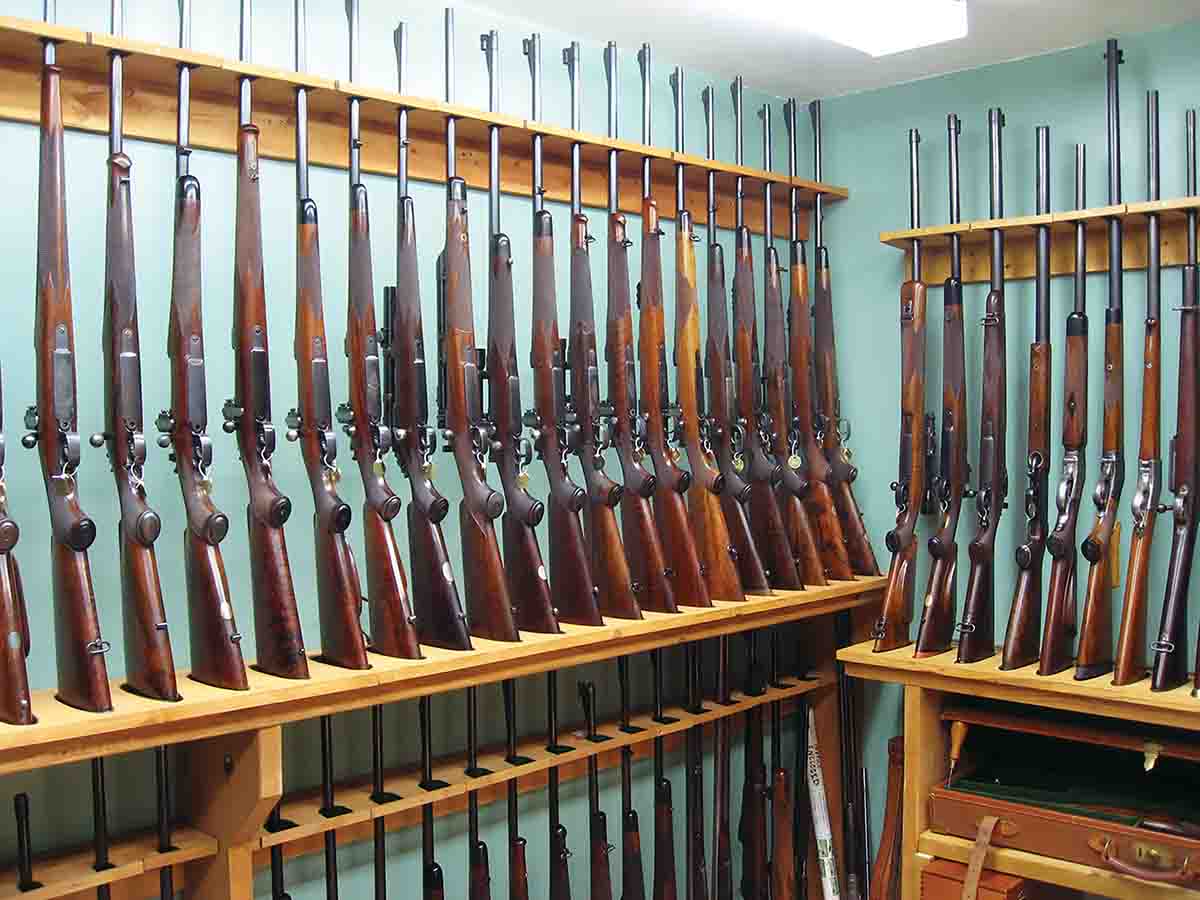
Mike self-published the second volume in 2013, after Precision Shooting folded, and sent me a review copy. It contains even more information on Griffin & Howe rifles, including an approximate list of when each was made according to their barrel number. It indicated both Hemingway’s rifle and mine were made in 1930, but to be extra sure I also contacted Paul Chapman, the historian at G&H, who confirmed my rifle was built in 1930, though they didn’t have any further details. (Yes, Griffin & Howe is still in business, and might even make somebody a 1903 sporter for the right price.)
At that point, I knew the All-Weather Alaskan on my rifle was not the original scope. Rifle loonies tend to acquire the latest technology, especially those who can afford a Griffin & Howe rifle. Unfortunately, Mike Petrov passed away in 2014, so I couldn’t discuss my rifle with him, but his books have provided many other details, including the fact that G&H refused to drill holes in barrels to mount sights – the reason the ramp front sight on mine is a barrel-band model, no doubt attached with silver solder. The rifle also came with an old Whelen-type sling with detachable swivels, probably also part of the original order.
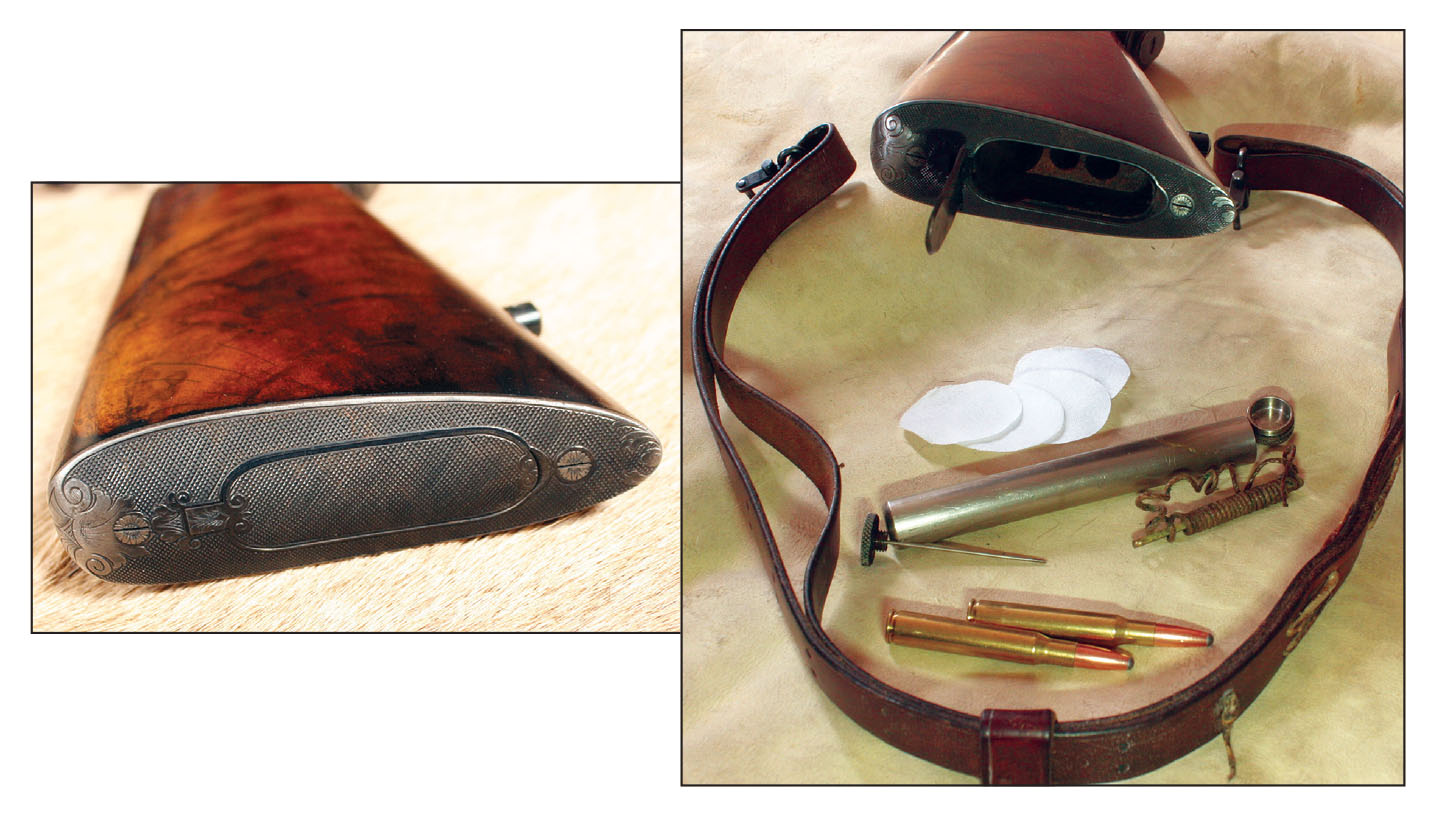
At that point, it was time to shoot the rifle, but I first used my ancient and reliable Bushnell collimator to center the dot reticle, and the half-inch clicks on the Lyman worked perfectly. The test rounds included a box of Federal’s new Non-Typical Whitetail 150-grain factory loads, recently found at the local ranch/supply store, and four handloads that had worked well in other .30-06s, including one of my previous Springfields.
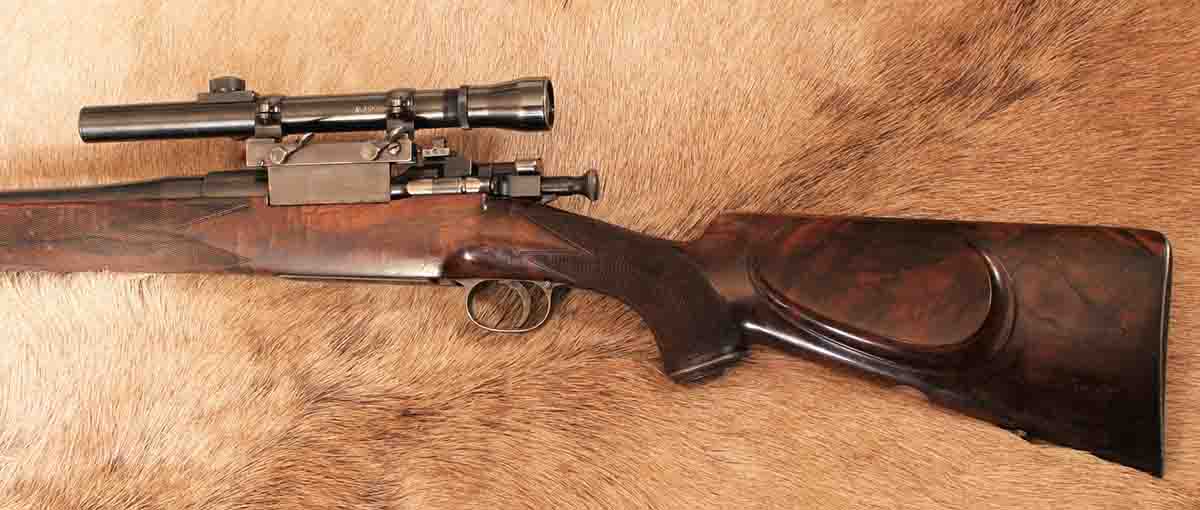
Given the low-powered scope, the rifle shot pretty well – and turned out to be perfectly sighted- in with the Federal ammunition without any further turret adjustments, with groups centered 1.5 inches high at 100 yards. The 220-grain handload landed dead-on at 100, fine for timber hunting and it may get used this fall. I just drew a cow moose tag for our local area, and Griffin and Howe Springfields were born to hunt.
.jpg)


